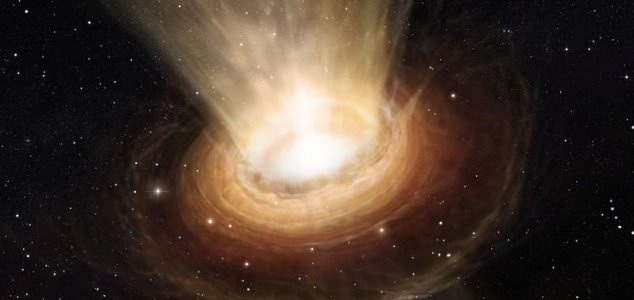
Black holes can grow to become truly monstrous.
There is believed to be a supermassive black hole at the center of almost every galaxy and now thanks to a new study by Professor Andrew King from the University of Leicester it is possible to get a much better idea of just how truly enormous these gravitational monsters can actually become.
King’s research focuses on calculating the maximum size that a black hole can reach before it loses the orbiting disc of gas that it relies on to sustain its growth.
“The significance of this discovery is that astronomers have found black holes of almost the maximum mass, by observing the huge amount of radiation given off by the gas disc as it falls in,” said Professor King. “The mass limit means that this procedure should not turn up any masses much bigger than those we know, because there would not be a luminous disc.”
Under very specific circumstances however even 50 billion solar masses can be exceeded.
“Bigger black hole masses are in principle possible – for example, a hole near the maximum mass could merge with another black hole, and the result would be bigger still,” he said.
“But no light would be produced in this merger, and the bigger merged black hole could not have a disc of gas that would make light.”
Originally posted 2015-12-24 15:29:07. Republished by Blog Post Promoter













